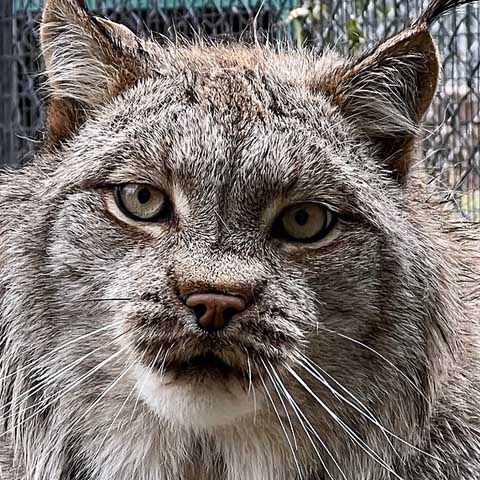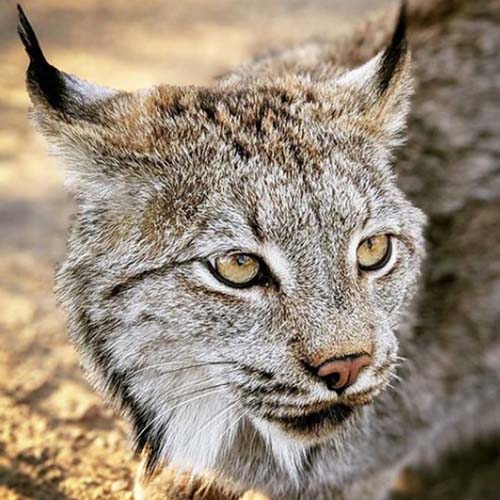Known for being a single bonded and territorial animal, this beautiful cat is marketed to buyers in the United States along with bobcat ownership. An expensive, and often times illegal, private possession of the Canada Lynx, includes a dedicated lifespan of ~20 years in captivity. These cats are predictably dangerous as they mature and will attack in protection of what they perceive to be their “person” or territory. Though legal to own in some areas they are generally classified as inherently dangerous wild animals. Their razor sharp teeth and hooked claws can cause instant severe harm.
Canada Lynx Facts – Lynx canadensis
Habitat: Dense boreal forests
Lifespan: Wild 8-12 years Captivity 18-22 years
Diet: Carnivore
Status: Least concern
A medium -sized, long-legged cat, with thick fur, and large paws. Winter pelage (fur) is dense and has a grizzled appearance with grayish-brown mixed with buff or pale brown fur on the back, and grayish-white or buff-white fur on the belly, legs and feet. Summer pelage is more reddish to gray-brown. Lynxes have a relatively small head with a flared facial ruff. Back of the ears black at base, ear tips prominently marked with an elongated tuft of black hair. Short, completely black tipped tail. Long legs, with hind limbs longer than forelimbs. Snowshoe like paws, that can spread widely with the fur covering the paws long and dense. Males are slightly larger and heavier than females.
Snowshoe hares form most of the diet, may also prey on small rodents and ground birds; ungulates are mostly eaten as carrion; larger food items may be cached under snow or brush and visited later. Almost entirely nocturnal, hiding during the day. They hunt by either stalking and rushing at their prey or ambushing it from “ambush beds” established near the trails of prey.
Canada lynxes live in boreal, subboreal, and western montane forests, preferring older regenerated forests and generally avoid younger stands. They also need persistent deep snow, which limits competition from other hare predators. They can tolerate human disturbance.
Breeding season is from March to early April, with a gestation of 60 to 70 days, 1 to 8 cubs will be born. Dens are found in hollow logs, stumps, timber clumps, or root tangles. Populations undergo dramatic fluctuations roughly every 10 years, following the regular cycles of population increase and decline of their primary prey, the snowshoe hare.
Meet our Canada Lynx

Jynx the Lynx
Jynx-the-Lynx arrived at Cat Tales in August 2020 after we were contacted regarding his lifelong owner and bonded caregiver, Jon, who had recently passed away. A longtime friend of Jon’s who was the executor to Jynx’s care and placement, reached out to Cat Tales to find a forever home for this orphaned lynx. Upon arrival he appeared to be in quite good health, something that often is not the case when we receive rescues from the private sector. Jynx is exceptionally large for a Canada Lynx and has the attitude to match. Born 2007

Sibella
Sibella, an adult Canadian Lynx with both adoring and fiercely protective lynx-like qualities, has been with us at Cat Tales since September 2018. She arrived at four months old and initially lived in our nursery, where a few dedicated keepers worked closely with her to ensure she was comfortable with health checks. As she matured, she moved outdoors near our canines and, more recently, into the Small Cat Forest next to Jynx-the-Lynx. Sibella has fully grown into herself, displaying a vibrant and curious personality. She loves to play with Jynx through their enclosure walls and is thriving in her new home. Born on May 10, 2018, Sibella continues to be a cherished part of our sanctuary.


